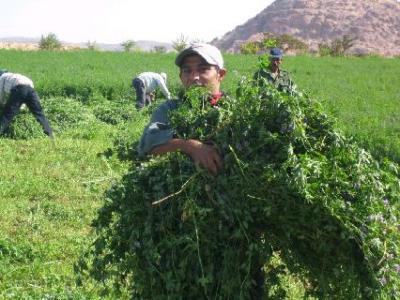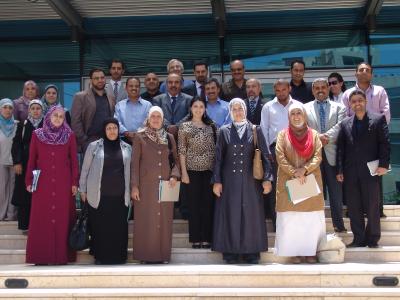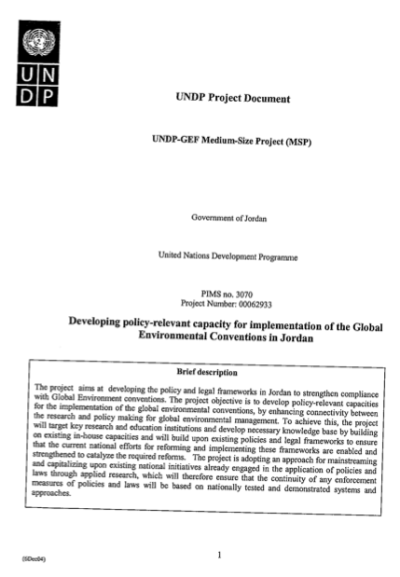The Hashemite Kingdom of Jordan stretches over an area of over 90,000 km2 in the hot and dry region of West Asia. It is an almost land-locked country, bordered by Israel and the West Bank to the west, Syria to the north, Iraq to the east and Saudi Arabia to the southeast. The port of Aqaba in the far south gives Jordan a narrow outlet to the Red Sea. Its eastern part is largely desert; elevations therein range from 300 to 1,500 metres and annual precipitation is less than 50 millimeters. The central region of the country contains the Jordanian highlands (average altitude 900 metres), with rainfalls of up to 600 millimeters in the north. Jordan’s outstanding topographical feature is the great north-south rift, stretching from Lake Tiberias through the Jordan River Valley to the Dead Sea (the lowest point on earth, more than 400 meters below sea level). Jordan has three major rivers: Jordan River and its two principal tributaries, the Yarmouk and the Zarqa rivers. Because of its salinity and other quality problems, surface water is used mainly for irrigation. Drinking water is taken from underground aquifers and King Abdullah Canal.
Jordan, according to mid-1994 statistics, has a population of 4.14 million and a population density of about 42.4 inhabitants per km2. Over 40 per cent of Jordan’s population resides in the Amman area, with the capital, Amman, having over 1.48 million people. In the longer term, Jordan is likely to face severe water shortages, a problem that can be overcome only through increased regional co-operation. Jordan’s most pressing environmental problems are the need to manage more effectively the scarce water resources and cultivable land in order to meet the growing needs of a population which grew at a rate of 3.4% per annum in the decade between 1980 and 1990.
More than 80% of the country is made up of unpopulated desert. Water resources in Jordan depend chiefly on precipitations within the country; exceptions are the Yarmouk River, which is fed mainly by the rain that falls on Syrian territory, and the Azraq aquifer, whose replenishment also depends on precipitations in Syria. The annual average rainfall ranges between 600mm in the northern uplands and less than 50mm in the southern and eastern desert areas. It usually rains between October and May, with heavier precipitations between December and March, when 80% of the annual rain falls.
Projects Completed
Latest Publications
See allThe project’s long-term goal is to develop the policy and legal frameworks in Jordan to strengthen compliance with Global Environmental…




